Mark Smithers reports on the West Lancashire Light Railway, a family-friendly operation which has just celebrated its 50th anniversary after starting from humble beginnings in 1967.
IN 1878, the standard-gauge West Lancashire Railway was opened from Southport to Hesketh Bank, with a through connection to Preston following in 1882. This line remained in use until 1964, when it fell victim to the Beeching cuts, removing Hesketh Bank from the main line map altogether as a consequence.
Six schoolboys from King George V School in Southport, already members of the Narrow Gauge Railway Society, decided at this stage to ensure the survival of a representative collection of 2ft-gauge industrial equipment in the area, on the site of an abandoned clay pit belonging to the Hesketh Bank Brick and Tile Works (also known as ‘Alty’s after its corporate proprietor, Henry Alty Ltd), which had been established following the discovery of clay during the building of the West Lancashire Railway.

The new venture began in earnest in September 1967 following the closure of the nearby Burscough Brick and Tile Co Ltd’s narrow gauge railway system and initial efforts on the part of the schoolboys to acquire a Lister petrol locomotive from the site.
These proved abortive, but Ruston & Hornsby 13hp four-wheel diesel locomotive Clwyd (264251/1951) was bought soon afterwards from the same source.
Fortunately, one of the schoolboys had a family connection with Henry Alty’s Ltd, and Clwyd duly arrived at the Hesketh Bank site on April 6, 1968, by which time 150 yards of track for the new West Lancashire Light Railway had been laid, and construction work had begun on a new brick-built shed for the locomotive.
In 1969, a second Ruston & Hornsby Diesel – Tawd (222074/1943) – was acquired, this time built to the larger 20hp specification. Passenger rolling stock for the embryonic line was obtained in the form of two ‘Silver Belle’ bogie carriages disposed of as redundant by the Southport Pier Railway.
By 1970, the track extended to 370 yards, and the railway’s route was taking shape around two sides of an abandoned clay pit, once used as a source of raw material by Henry Alty’s Ltd.
The first moves to bring steam motive power to the embryonic West Lancashire Light Railway began in 1969. In December of that year, an auction took place of the remaining assets of the Dinorwic Slate Quarries, Llanberis, North Wales.
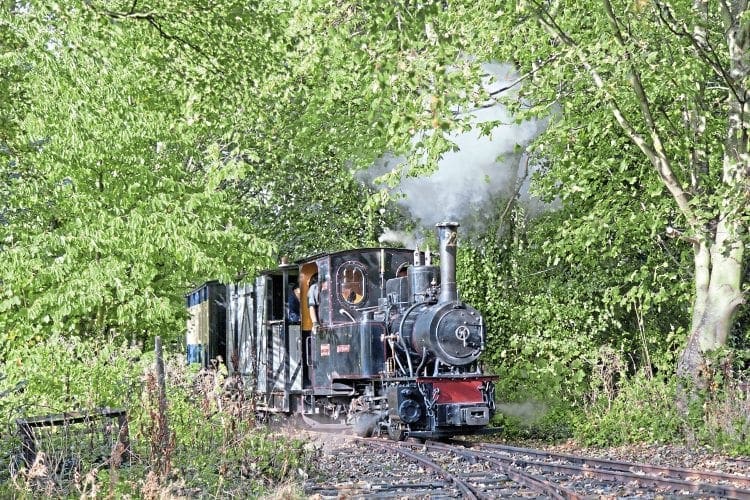
At this stage in the railway’s development, the acquisition of a complete locomotive in working order was a very remote possibility, so the frames, wheelsets, cylinders and outside motion of Hunslet 0-4-0ST Irish Mail (823/1903) were acquired by the group for £165, with a view to restoration, using components acquired from elsewhere.
This locomotive had been taken out of use in 1956 and stripped down for an overhaul that never materialised, with the chassis stored outside the quarry workshops.
In the grand scheme of narrow gauge Hunslet locomotive design, Irish Mail can be regarded as a member of the ‘Second Generation Chamfered Mainframe’ variety of ‘Mainstream 7 x 10in 0-4-0ST Quarry’ class locomotive, distinguished from other Dinorwic members of this grouping by the provision of an enclosed cab when new (the Pen-yr-Orsedd locomotives, Britomart, Sybil and Una are very similar).
Be that as it may, the quest for replacement parts was to have an interesting solution. One of the assets bought by a private buyer at the 1969 auction was Hunslet 0-4-0ST Alice (780/1902), which had been withdrawn from service in 1960 and abandoned some 1,600ft above sea level in the quarry at what was known as Australia level.
Recovery of the locomotive from this remote position seemed impossible at the time, so it was stripped for spares, and its frames, boiler and saddle tank left in situ.
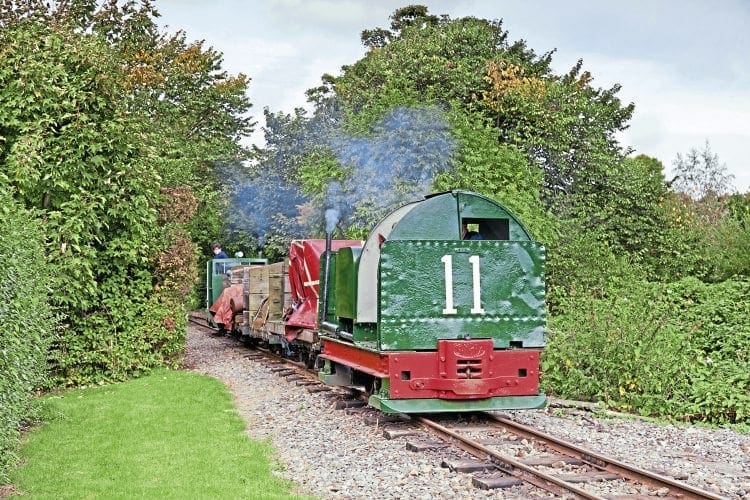
In 1972, these were bought by the West Lancashire Light Railway (WLLR) group, and the task of lowering the hulk to ground level was undertaken over a six-month period.
Once the boiler had been removed for transfer to Irish Mail, the remaining components of Alice were sold to the Bala Lake Railway to finance the rebuilding of Irish Mail, whichwaseventually ready for hydraulic testing in 1979, after the necessary re-gauging work from 1ft 10¾in to nominal 2ft had been carried out.
The engine returned to full working order for use on the WLLR in time for the 1980 season. During the intervening years, it has made several visits to other narrow gauge railways in the UK, including the Ffestiniog Railway’s Hunslet Hundred gala, staged during the May Day weekend of 1993, and it has also visited Belgium.
During the ensuing years, further acquisitions on the locomotive front followed, including former Sheffield Corporation Hibberd 20hp petrol unit Bradfield (1777/1931), a rebuild of a 1918-vintage bow-framed ‘Simplex’ locomotive, incorporating straight-profile mainframes.
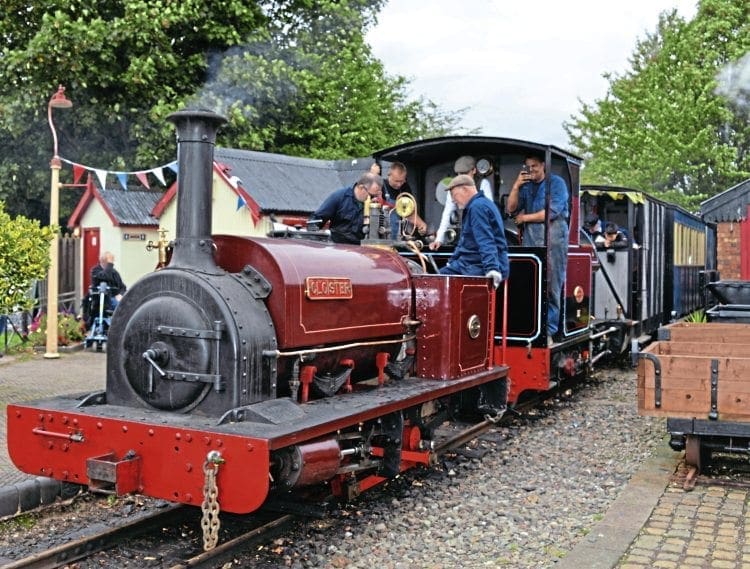
The opportunity for another steam acquisition soon arose, however, and this time the source was to be situated overseas.
The design of the locomotive in question originated with a class of 320 0-6-0WTT locomotives constructed during the First World War for use on the 60cm tramways associated with the French artillery units.
This class, known as the ‘10 Tonne Decauville’, was a typical Continental narrow gauge design, employing inside frames with integral well tank, outside cylinders and Walschaerts valve gear, short coupled wheelbase (in this instance in conjunction with a flangeless intermediate wheelset), and cast smokebox saddle.
Decauville was unable to supply sufficient locomotives of the class to satisfy the needs of the French Government, and so orders were placed with the British manufacturer Kerr, Stuart for the construction of 70 similar locomotives in three batches: (Works Nos. 2402-16 and 2428-57 of 1915, and 2995-3019 of 1916).
During the development stage, and presumably as a consequence of experience gained with the original Decauville specification, certain detail alterations were made to the design of the ‘Joffre’ class, as the Kerr, Stuart locomotives became known, mainly to improve their riding characteristics.
These are shown in accompanying illustrations and included giving an additional 672lbs at the leading end through a buffer beam redesign; compensated springing for the trailing and intermediate axles; revised tyre profiling; a redesign of the steam chests in favour of a pattern similar to that found on the maker’s three 0-4-2T locomotives Hampton, Kempton and Sunbury, built for the Metropolitan Water Board; and a spark arresting, rather than stovepipe, chimney.
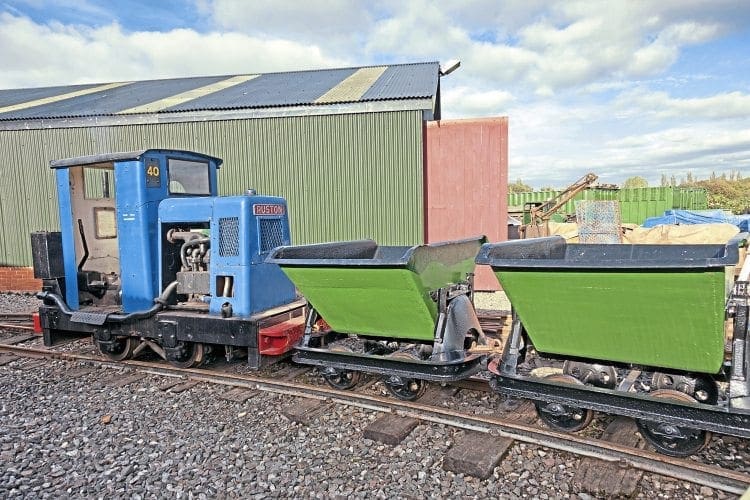
Once the design alterations had been made, the vital statistics of the ‘Joffre’ class were: cylinders: 8½in x 11in (the nearest British equivalent to the Decauville design’s 215mm x 280mm); weight in working order 10.4 tons; water capacity 264 gallons; coal capacity ¼ ton; and tractive effort 3,862lbs.
Little appears to be known of the careers of individual members of the ‘Joffre’ class while in military service, but the Stoke company was confident enough of the merits of the design to order a further 20 units to be built to stock (Works Nos. 3027-46), presumably hoping to gain orders from home or overseas customers.
In the event, sales did not emerge in the form originally intended, but instead 25 members of an ‘Anglicised’ specification were produced, known as the ‘Haig’ class (without well tanks between the mainframes), and appeared as Works Nos. 3083-9 of 1917-8; 3115-20 of 1918-20; 4165-6 of 1920; and 4176-85 of 1920-9, built to gauges of between 2ft and 3ft 6in.
Of the ‘Joffre’class, some five members were sold after the 1918 Armistice to Carrièrs de la Valee Heureuse, Marquise Reinvent, Pas-de-Calais, a limestone quarry, where they are believed to have remained in use until after the Second World War, being noted out of use in 1956.
All five, (2405, 2442, 3010, 3014 and 3017) were returned to the UK on October 11, 1974, and of these, No. 2405 was immediately transported to Hesketh Bank, with the others being placed in store at Gloddfa Ganol until moving on to pastures new.
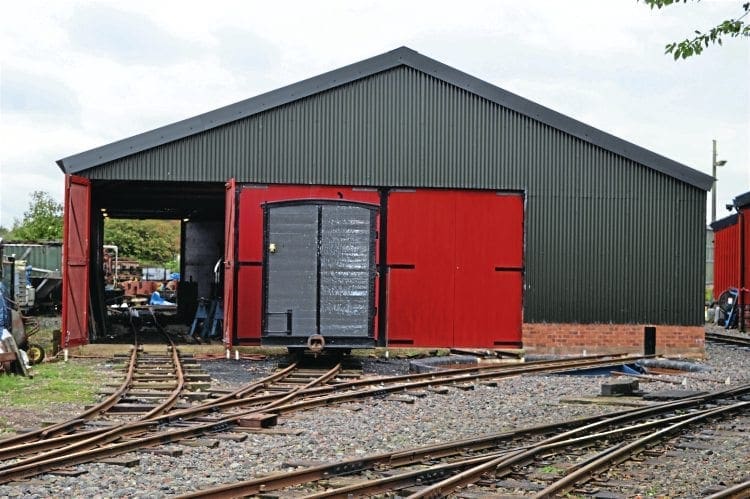
Restoration of Kerr, Stuart No. 2405 turned out to be a protracted affair, which was not surprising, given the tasks involved.
The work entailed inter alia the replacement of the tubes, inner firebox, smokebox and door, and much of the original spark-arresting chimney, which had been replaced by one of the stovepipe variety.
Other items requiring replacement included the badly corroded bunkers, side tanks, the rear portion of the mainframes, much of the cab plate-work (all victims of the loco’s long period of open storage), the badly worn tyres, injectors, slide bars, various pins for the motion, and parts of the compensated spring mechanism.
Additionally, modifications were made to the braking system to allow for the fitting of a steam brake (to allow for compliance with modern operating requirements), while the well tank, which had latterly been filled with granite ballast, was restored and pressure tested to resume its original function.
After a 15-year effort, which included off-site work on the boiler, the locomotive returned to service at the railway in 2012, being named Joffre at a special re-commissioning ceremony on July 22.
On May 10-13, 2013, Joffre returned to France for a gala visit to the Rille system, then during the weekend of September 19-20, 2015, sister locomotive 3014 paid a visit from the Apedale Railway to Hesketh Bank in order to take part in a gala to celebrate Joffre’s centenary, and the subsequent Autumn gala.
More recently, Joffre has paid visits to the Apedale Railway, Threlkeld Quarry, and once again across the English Channel to the P’tit train de la Haute Somme.
The German school of narrow gauge steam locomotive design made its presence felt in the WLLR operational fleet in 1984 with the acquisition by society members of two Orenstein and Koppel 0-4-0WTTs from the Minas y Ferrocarril de Utrillas, a 60cm-gauge colliery system near Zaragoza, Spain.
Both of these locomotives were in need of extensive restoration work, including the manufacture (locally in Preston) and fitting of new boilers before they could be returned to service.
The first of the pair to return to steam was works No. 6641 of 1913, Montalban, the other locomotive being No. 2378 of 1908, Utrillas.
Despite both locomotives being constructed to the classic Teutonic specification for narrow gauge locomotives of this type – inside frames and integral well-tank, outside cylinders and valve gear, short fixed wheelbase, high-pitched boiler, and ‘accessible’ pipework – they are not identical.
The most immediately apparent difference in their appearance is the fact the steam chest lids on Montalban are located in a plane parallel to the axis of drive of the valve rod, whereas those on Utrillas slope downwards towards the outward limits of the loading gauge.

On July 1, 2007, the centenary of Urillas was celebrated with a visit from the mayor of Zaragoza. Currently, Montalban is undergoing an overhaul, which will involve repairs to the boiler barrel, which is now some 30 years old.
Irish Mail was not the only ‘Quarry Hunslet’ to be based on the West Lancashire Light Railway, for in October 1986, Hunslet Jonathon (678/1898) arrived from the Bala Lake Railway, where it had previously been on loan from its base at Lytham St Annes.
Jonathon, unlike Irish Mail, has a rectangular mainframe profile (effectively a Dinorwic-based counterpart of the sub-class represented by Penrhyn locomotive Nesta and its sisters, and a descendant of the ‘Small Chatham’ variant of 18in-gauge Manning, Wardle 0-4-0ST locomotives), and does not possess a cab, but neither of these facts prevented the locomotive putting in some useful work at Hesketh Bank for nearly two decades prior to its eventual return to Lytham in 2005.
One of the locomotives currently in store awaiting restoration is 0-6-0WTT Chrzanow (3606/1957), a representative of Polish narrow gauge practice.
In 1998, a group of narrow gauge steam locomotives was shipped from Mozambique to the UK for preservation. These locomotives had been part of the operational fleet of the Sena Sugar Estates Corporation, but had been out of use for some years.
Two of these locomotives found their way into the WLLR collection, with both being types that will be familiar to domestic narrow gauge enthusiasts, but they are currently off-site for restoration.
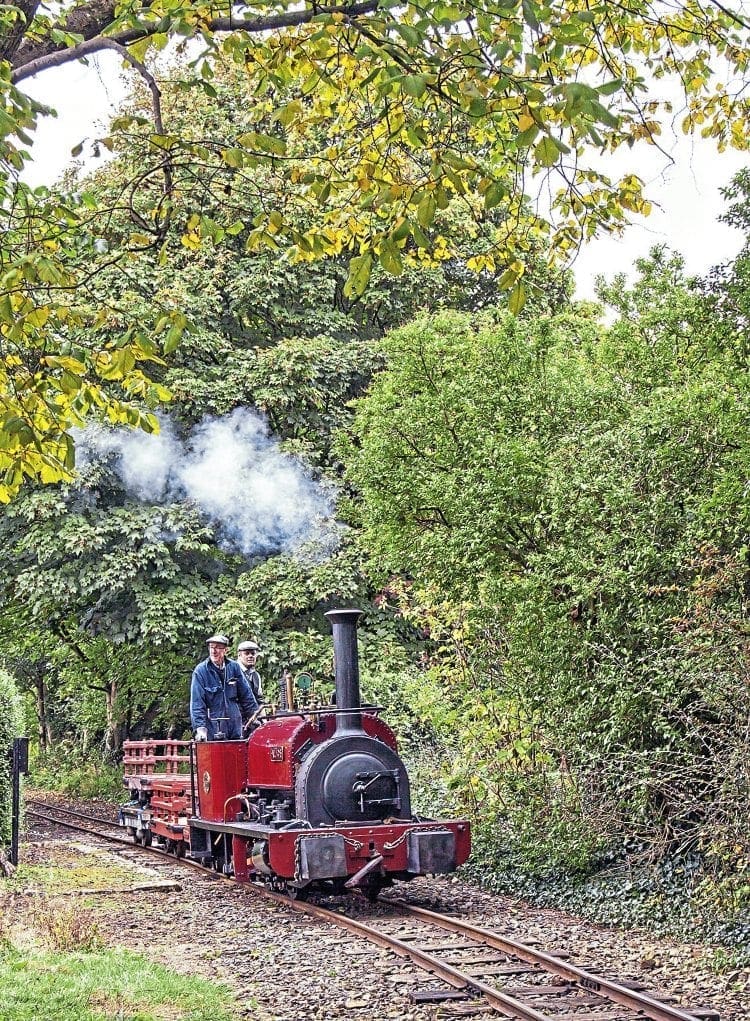
Sena No. 6 is a German Army ‘Feldbarn’ 0-8-0T (Henschel 14676/1916), while Sena No. 16 is a classic John Fowler 0-4-2T (15513/1920), originally built for the 50cm-gauge Mopea Estate system.
This locomotive, which will be restored as a 2ft-gauge unit, well illustrates an important detail of John Fowler locomotive construction, namely that outside-framed locomotives built for gauges of less than nominal 2ft normally had their frames spaced sufficiently far apart to accommodate 2ft-gauge wheelsets (this property appears to have been taken from Decauville practice).
The one major exception to this rule came in the form of the seven 18in-gauge 0-4-2Ts built for the abortive Suakin-Berber Railway Campaign and Royal Engineers’ Strategic Reserve in 1885, which were restricted to an overall width of around 5ft 4in, grudgingly increased from the 5ft dimension found on the Vulcan Foundry design that preceded them.
An operational sister of Sena No. 16, No. 10 Zambezi (13573/1912) can be found on the Bredgar & Wormshill Light Railway in Kent. Sena No. 16, once restored, will not be the only John Fowler locomotive at Hesketh Bank, for on March 11, 2013, Fowler 0-6-0 15991 of 1926, originally Karachi Port Trust No. 6 and latterly known as Cheetal, arrived on long-term loan from Armley Mills Industrial Museum in Leeds for restoration to working order.

This locomotive, whose design is modelled on the German school of inside-framed narrow gauge well tanks, is currently stored in the two-road shed at Becconsall.
Until 2013, the Stafford-based manufacturer Bagnall had not been represented on the WLLR, but matters were to change on August 4 that year with the arrival of the boiler-less ex-Dinorwic Quarry 0-4-0ST Sybil from Cornwall.
The only newly built steam locomotive to break the post-1886 Hunslet supply monopoly in the quarries, Sybil was built in 1906 (Works No. 1760) as a 7in x 12in inside-framed locomotive with ‘Bullhead’ boiler and Bagnall-Price valve gear.
Sybil spent most of its working life on the Hafod Owen level at Dinorwic prior to migrating to Cornwall, initially for operation on the private Inney Valley Railway, and latterly to the Launceston Steam Railway, where a great deal of mechanical work was carried out by then-owner James Armstrong Evans, although the boiler had to be condemned.
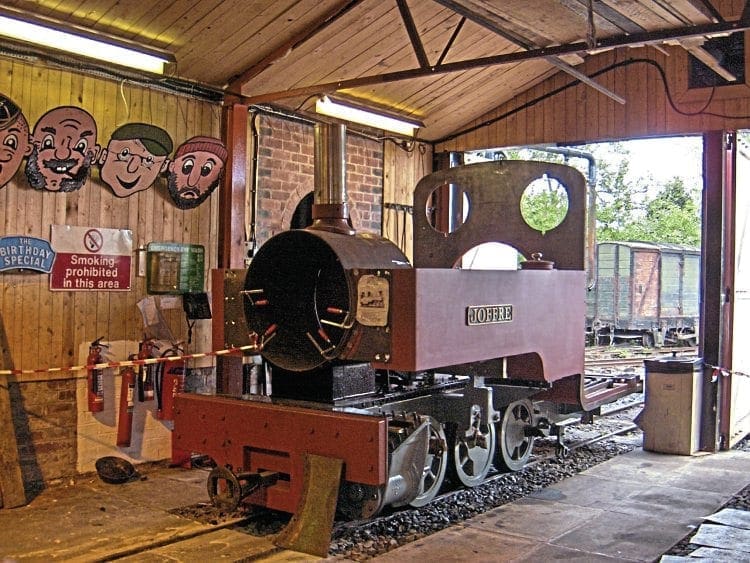
A new organisation, the Sybil Locomotive Trust, was formed to take over ownership of Sybil at Hesketh Bank and in 2014, Graham Morris Engineering of Daventry was appointed to undertake the design and obtaining of approvals for a new boiler for the locomotive.
By February 2, 2017 the boiler barrel and inner and outer firebox wrappers had been completed and these, together with other components, were on display in the two- and three-road sheds during the 50th anniversary gala last September.
Shortly before Sybil’s arrival at Hesketh Bank, former WDLR Baldwin 4-6-0PT (45190/1917) was transferred to a private workshop for restoration for eventual use on the railway, having been bought by member Graham Fairhurst from Statfold Barn.
This locomotive, which was originally W.D.L.R. No. 1058 (later No. 608) was one of a pair of classmates acquired by Statfold Barn from the Ryam Sugar Mills system in India.
Restoration work on the locomotive is well advanced and it will prove a distinctive addition to the operational locomotive fleet, as well as offering interesting opportunities for visits to other railways.
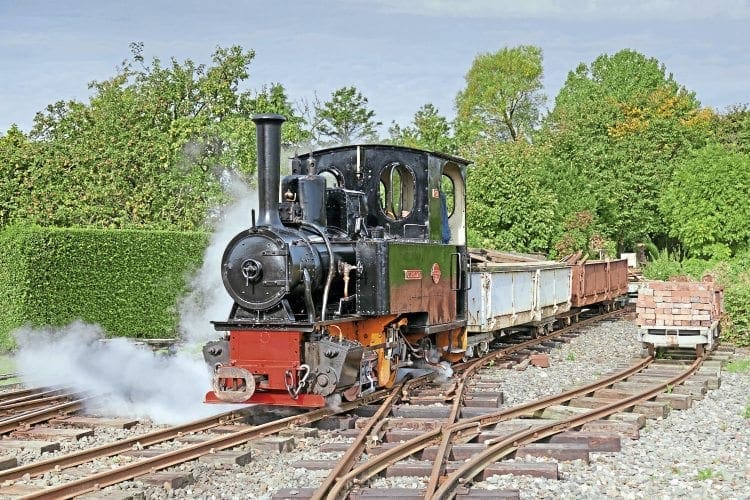
The ownership of most of the West Lancashire-based assets is now divided between two organisations: the West Lancashire Locomotive Trust (which owns Joffre, Irish Mail, Clwyd, Tawd and Bradfield), formed as a limited company in 2002, and the West Lancashire Railway Trust, formed in 2006, which holds the buildings, structures, machinery and leasehold interest in the site. Both are now registered charities.
Over the years, the railway’s infrastructure has grown on a large scale and most of the system’s key operational facilities are concentrated at the Becconsall end of the line.
The first shed, completed for Clwyd in 1968, is now a store, and the first combined shed/workshop building (the ‘two-road shed’) was completed from 1970-74 and is currently the timber carriage shed (now requiring replacement).
The diesel, woodwork and restoration shed (the ‘three-road shed’) was largely completed by 2002, although the restoration area was not added until 2015. The two other stopping points are Willow Tree Halt and the woodland terminus Delph, where ‘running round’ normally takes place.
The visiting locomotives for last year’s 50th anniversary gala were appropriately former Dinorwic Hunslet 0-4-0STs Cloister (541/1891) from the Hampshire Narrow Gauge Railway Trust, and Alice, now owned by Julian Birley and based at the Bala Lake Railway, together with Stanhope, returning from the Apedale Valley Light Railway.
Ex-Penrhyn Railway Kerr, Stuart ‘New Type Tattoo’ class 0-4-2ST (2395/1917) Stanhope played an important part in the history of the WLLR between 1999 to 2010 when it was on loan to the line from its owner, who was waiting for the Moseley Railway Trust to open its permanent railway base.

The West Lancashire Light Railway has certainly come a long way during its half-century and it can look forward to an exciting future.
The West Lancashire Light Railway Trust, which currently has in excess of 150 members, has recently received a £10,000 Heritage Lottery Fund grant to support a business plan and management structure in connection with a larger scheme for expansion of the railway, and its educational and community facilities, relating to the creation of the new River Douglas Linear Park, planned for much of the old brickworks site.
The extended line, which would serve the park, is planned to incorporate a narrow gauge heritage centre and learning facilities, which could be used by schools and colleges as a base for some courses, and as a centre for preserving the skills necessary to undertake the conservation of our industrial history. There would also be enhanced visitor facilities for the railway and park.
The scheme is certainly an ambitious one, and it is hoped it comes to fruition. ■
■ The author acknowledges the help of Mike Spall of the WLLR for his assistance with information used in the preparation of this feature.
Read more News and Features at https://www.therailwayhub.co.uk/ and also in the latest issue of The Railway Magazine – on sale now!


